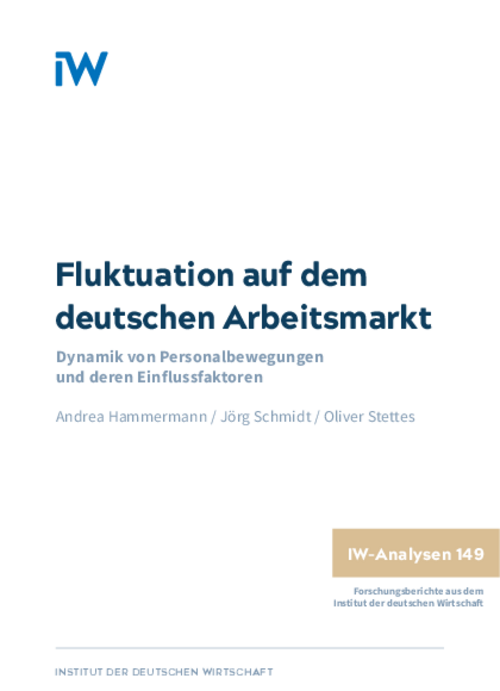Labour turnover in Germany tends to be relatively constant over time but decreases slightly in times of economic crisis, such as the Global Financial Crisis of 2008-2009 or the Covid-19 pandemic.

Labour turnover in Germany: The dynamics of worker transitions and their impact factors

Labour turnover in Germany tends to be relatively constant over time but decreases slightly in times of economic crisis, such as the Global Financial Crisis of 2008-2009 or the Covid-19 pandemic.
This is partly due to the fact that worker outflows are largely driven by employee resignations, which follow a procyclical pattern regarding the business cycle. While from the macroeco¬nomic perspective job-to-job transitions ensure an improved allocation of resources, high employee turnover is often seen as a signal for low employee retention. However, only few companies (around 9 percent in 2016) were actu¬ally concerned about the extent of their workforce turnover in the subsequent years. In fact, labour turnover and employment dynamics are regarded as strongly influenced by firm characteristics, such as its competitive pressure and a firm’s HR strategy. In contrast, the diversity of the workforce in terms of gender, age distribution and cultural background is of less importance for the dynamics of labour turnover. Regarding skilled labour shortages in con¬nection with structural changes brought about by the ecological and digital transformation, labour turnover may well gain even further importance as both a macroeconomic key figure and a KPI in corporate management.

Labour turnover in Germany: The dynamics of worker transitions and their impact factors

More on the topic

Areas of Conflict and the Role of Works Councils in the Digital and Green Transitions
Digitalisation processes and investments in environmental and climate protection are often accompanied by the introduction of new procedures and working methods.
IW
Determinants of personnel planning in Germany
The German labor market has been growing since 2005. The dip in the wake of the coronavirus pandemic between 2020 and 2022 is an exception, as the German labor market has reached a record level of 45.9 million people in employment by 2023.
IW